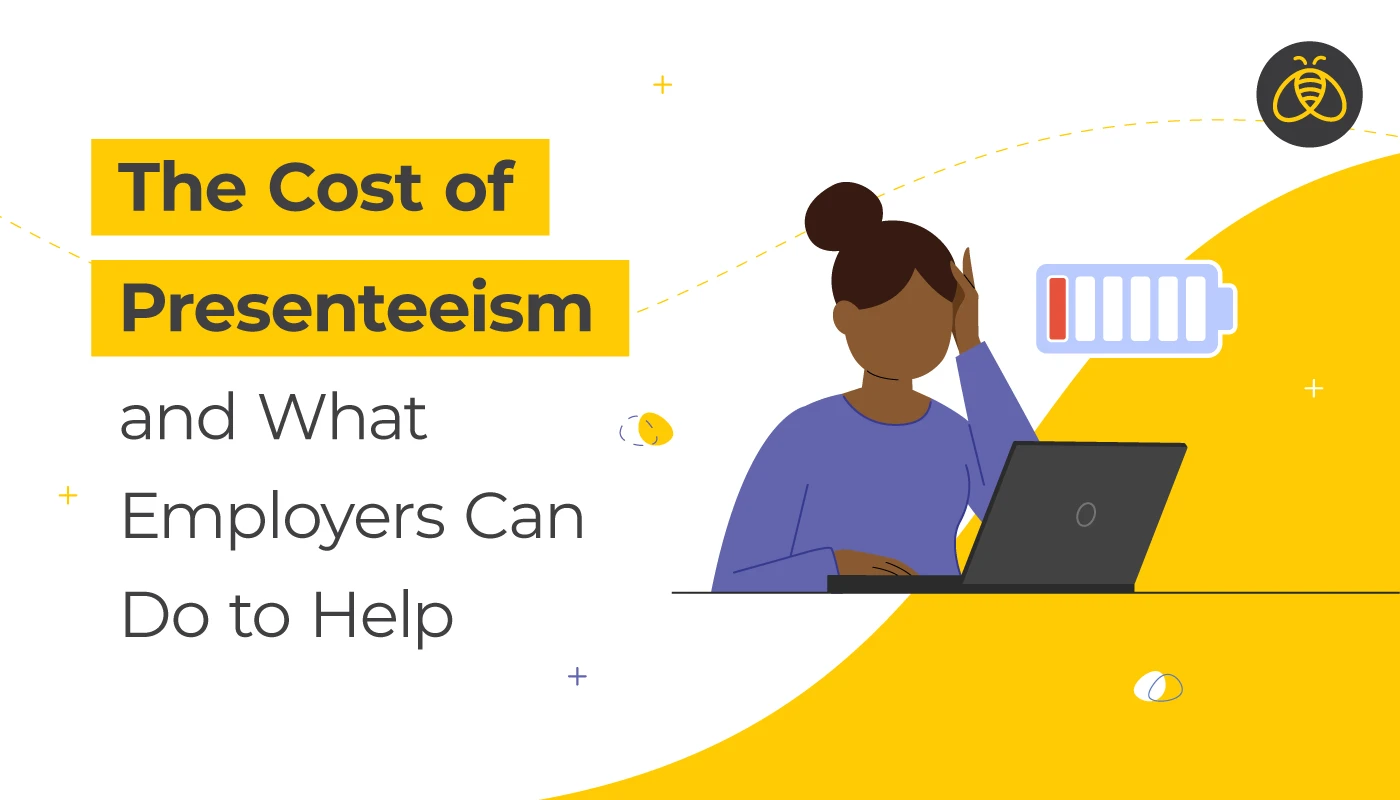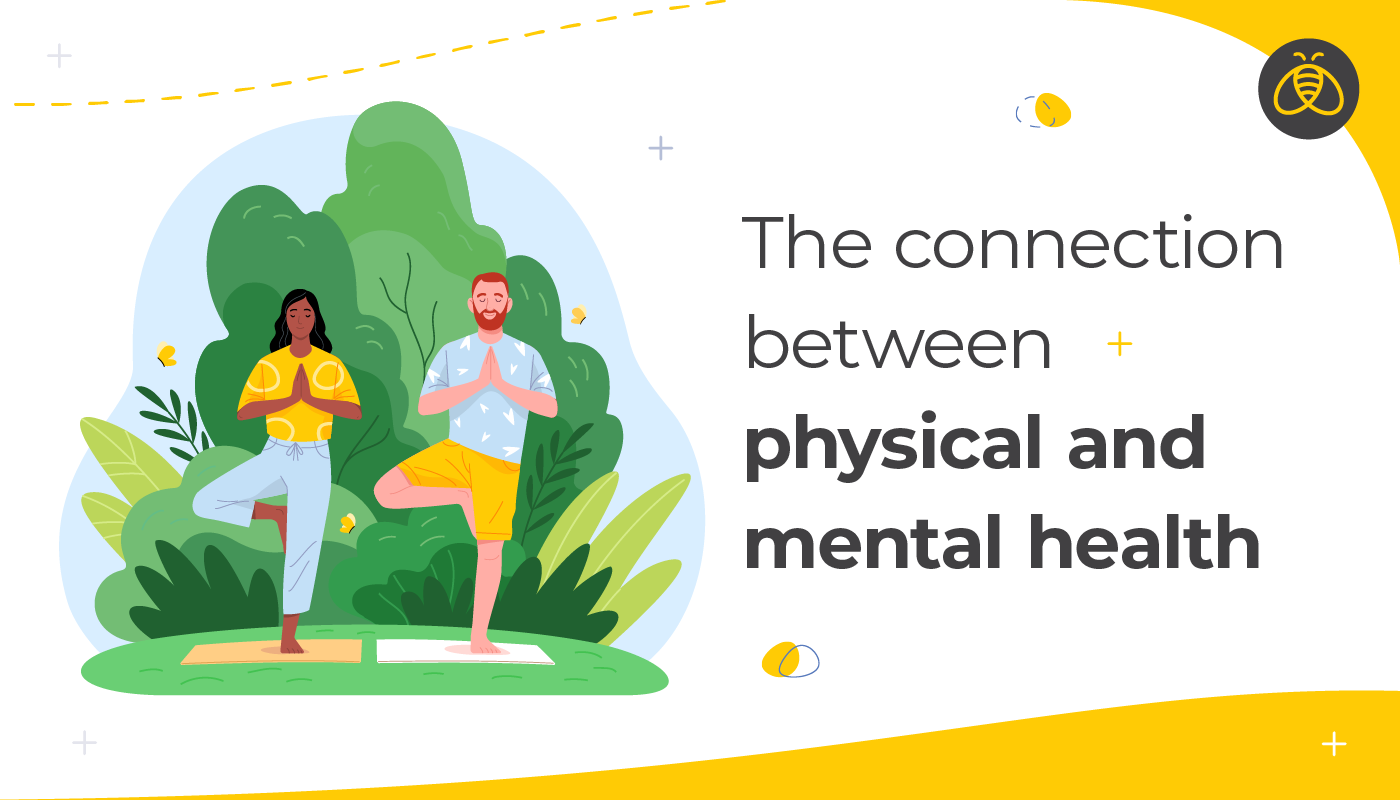The Cost of Presenteeism and What Employers Can Do to Help
By: Benefits by Design | Tuesday August 8, 2023
Updated : Thursday July 27, 2023
The cost of presenteeism can be difficult to see, especially compared to its counterpart, absenteeism. It’s easy to tell if an employee isn’t at work. It’s not so easy to tell when an employee is working, but at a reduced capacity.
Presenteeism – Definition and Causes
Presenteeism is when employees go to work despite being sick or tired, affecting their productivity and work quality. It leads to reduced productivity, lower quality of work, and an increased risk of developing health disorders. Employees might practice presenteeism when they are dealing with a lack of sleep, mental health issues, allergies, joint or back pain, etc.
Presenteeism has always existed in the workforce well before the pandemic. Now it has gone digital, and it is subconscious bias that has continued to allow it to thrive.
There are a number of reasons employees may do this:
- An outdated corporate culture of always showing up, working overtime, and being available at all hours of the day and night. This lends itself to the idea that if an employee doesn’t show up to work, their career will be punished, or they will be seen as a “slacker”.
- The notion that unless you are extremely ill, there is no excuse to not come to work. This may be especially true for businesses whose employees are required to provide a doctor’s note after being absent for a specific number of days. (Different provinces have different regulations regarding when employers can ask for a doctor’s note.)
- Heavy workloads as a result of employee burnout, understaffing, or other causes. If calling in sick means that the employee faces more work upon their return, they may choose to come into work at half capacity, so they don’t fall behind.
- Working for a small company or being on a small team. If an employee knows that their co-workers are counting on them, it can feel like they are letting them down.
- Working remote may make it easier to show up to work when unwell – either mentally or physically.
The Cost of Presenteeism
Employers have been trying to figure out the balance between calling in sick and coming to work sick. Is it better for the employee to be there to at least get some work done? Or should the employee stay home until they are ready to give it their all? Both have a cost, but which one is more acceptable? A half day of productivity, or none at all? And the answer may very well depend on the employee’s role. If they are a receptionist for a very slow firm, it might just be that they need someone to be present at the desk. However, if they are an engineer, for example, it might be more prudent to ensure they are well before coming to work.
The Cost of Presenteeism for Employers
In a perfect world, your workforce would never be sick, and you would get 100% productivity all the time. However, we know that is not the case, which is why employers provide things like sick days, PTO, and vacation days. Which means that as an employer, you are already setting up your employees to allow for unforeseen illnesses or emergencies.
So, when employees come to work at less than 100%, but you are paying them 100% of their daily salary or hourly wage, you are technically not getting what you pay for.
According to a new Manulife study, “48 working days were lost per employee due to health‑related absence and presenteeism in 2022”. Which means that if you take away the days that employees actually called in sick, let’s say 10, the rest of the lost productivity was due to them working while unwell.
The cost of presenteeism is also directly related to why it is occurring. The condition an employee may be suffering from will be a factor in how much if affects their productivity.
Another reason employers should discourage sick employees from coming to work is twofold. One, it will likely take longer for that employee to recover from both physical and mental illnesses, resulting in further lost productivity. And two, if it is contagious, there is a risk that other employees may also become ill.
The Cost of Presenteeism for Employees
For employees, the cost of presenteeism is also theirs to bear. As mentioned above, coming to work sick will likely mean a longer recovery time. And that is not just for a common cold. It could be for physical injuries, as well as anxiety or other mental illnesses. Especially if the root of the mental illness is exacerbated by working.
Another fallback is practicing presenteeism could hurt an employee’s overall performance. And when their productivity suffers, they may be passed over for a promotion or big project. Which is slightly ironic, given the fact that one of the reasons employees come to work when they are sick is to avoid negatively affecting their careers in this manner.
What are Employers Doing to Help?
Employers are recognizing the cost of presenteeism and have started to take measures to address it by upping their wellbeing offerings and strategies.
Two-thirds (67%) of employers surveyed said they plan to invest in the wellbeing of their workforce, and 75% of plan sponsors anticipate dedicating funds, staff and/or resources to employee wellness.
When it came to prioritizing new programs, employers’ top choices were emotional or mental health support (46%), physical fitness support (32%) and prevention of illness and/or management of chronic conditions.
Employee Wellness Program Benefits and Options
- Wellness Spending Account
- Employee Assistance Program
- Paramedical Services
- Prescription Drug Coverage
- Flexible work schedules and locations
- Personal time off (PTO) and vacation days
We also saw an increase in Employee Assistance Programs (EAPs) in our own block of business over the last few years as employers prioritized improving the mental health support they provide to employees. However, it seems that more needs to be done to communicate the benefits of, and how to access these services. Reports from our block of business show a lowly 1.3% utilization rate.
All of these employee benefits work towards improving the health of employees, which in turn can help with presenteeism.


